Announcer:
The following program is a PBS Wisconsin original production.
Kevin:
The lines are longer. The number of new registrants is escalating pretty quickly.
Frederica Freyberg:
An alarming escalation of need is testing the limits of food pantries. From food scarcity to the closure of Head Start classrooms, the fallout from the government shutdown hits families hard.
I’m Frederica Freyberg. Tonight on “Here & Now,” we visit a busy food pantry that sees long lines and short hopes. Head Start classrooms have closed under the shutdown leaving families in the lurch. Reports of inappropriate conduct leads lawmakers to draft a bill punishing child grooming. And as we approach Veterans Day, stories come to life at the state’s museum dedicated to preserving history. It’s “Here & Now” for November 7.
Announcer:
Funding for “Here & Now” is provided by the Focus Fund for Journalism and Friends of PBS Wisconsin.
Frederica Freyberg:
The Evers administration overnight Thursday made full November FoodShare payments to 700,000 people in Wisconsin who rely on the assistance. That after a federal judge late this week ordered the Trump administration to fully fund SNAP, saying people have gone without for too long. Trump Friday appealed that decision, but a stay was not granted. People’s accounts in Wisconsin have been restored, at least for this month. Now the chaos in the SNAP program and overall higher costs have drawn more and more people to seek help from food pantries, including many first-time visitors. Over four days this week at one of Wisconsin’s busiest, the River Food Pantry in Dane County, they served nearly 5,000 individuals. As its executive director, Rhonda Adams, told me, long lines and empty pockets tell the story. What has it been like here in terms of numbers and demand on people’s part for help with food?
Rhonda Adams:
I can’t keep up with it, to be honest. It’s hard to keep up with them because they’re changing every day. But we just know that there is an increase in what we’ve been seeing over the last several months. We’re on track to serve over 20,000 unique individuals this year, and that’s up from last year, about 18,700. So a lot of people are coming to us. There’s a lot of need.
Frederica Freyberg:
You’ve been executive director for five years. How does this period of time right now compare to prior years?
Rhonda Adams:
There’s no comparison. This is — this is and I don’t even want to say crazy, but it is crazy how much need there is right now. So as I was looking at numbers again just from last week, serving close to 5,000 people in a week. We never thought we’d be able to do that and never thought we’d need to do that. But we’re here for the people that need us through very dedicated volunteers and a very devoted staff.
Frederica Freyberg:
Do you ever have concerns that this amount of donations won’t come in, won’t be able to serve the people that need it?
Rhonda Adams:
To be honest, yes, I did have that concern but I will tell you that our community has been amazing. They have heard our pleas. They’ve heard other food pantries’ pleas that please bring us money. Please give us money. Please give food. We need help. We need volunteers. And the community has responded.
Frederica Freyberg:
Even if, by court order, the SNAP funding is reinstated, do you expect it to be immediate where people will have that on their EBT cards?
Rhonda Adams:
I don’t. I don’t expect that to be immediate. I expect that to be weeks. And also, I think people are still going to be apprehensive about is that really true? Plus, I think people have found us and now have also found that we’re welcoming, that we’re here for them. And so we — I believe we’ll continue to see uptick in numbers here. And plus we’re coming into the holidays, which is always a busy time for us.
Frederica Freyberg:
How confusing and frightening is it for your customers, your clients, the people you serve to kind of be in the midst of what’s happening in Washington?
Rhonda Adams:
It’s very confusing. I was talking to some of the clients last week and they said, like, we’re scrambling, but we don’t — we don’t know which — what to listen to, which side to listen to. And like, we’re in the middle and who is also — who’s also in the middle are children. And that’s, that’s heartbreaking that children are going hungry and maybe going hungry because of the SNAP benefits being cut.
Frederica Freyberg:
What kind of provisions do you have here to help the community?
Rhonda Adams:
Yep. So the River has eight different programs and it’s really a way to give different access to different people and how can they get food. So we do have a mobile meal program where we go out into 24 different neighborhoods throughout the week, where we are delivering a meal. We also have our most busiest and popular program, which is curbside. And that’s really what the volunteers here are preparing, to put together bags for our clients that are coming curbside, with a variety of things. What we’re seeing here is produce: the most requested item, milk and eggs and dairy products and shelf stable products, all those kind of things. Meat. You mentioned also the meal. So this week we are serving chicken noodle soup, which has been really popular. But also, we do have a meal here every week. So again we’re serving four days a week and people can come to us for the meal. And it just takes a burden off of people having to prepare one more meal. They can have one already prepared for them and their families.
Frederica Freyberg:
Do you see a lot of first-time visitors?
Rhonda Adams:
Another heartbreaking thing. Yes, we do see a lot of first time. Last week was 81 households had never been here before. Came for the very first time and to see the looks on their face, they’re frightened. They don’t know what to do or what to expect. And, you know, for many of them, they’re feeling shame and they’re making a — telling us, you know, sorry that I’m here and apologizing for being here. We greet them with a smile. You saw Kevin here as our register — registering clients and treating them with a smile and with telling them, it’s okay, we’re here. We’re going to help you.
Frederica Freyberg:
What can people who want to help you, this pantry, other pantries, food banks, what can they do?
Rhonda Adams:
Yeah. And it’s really for all food pantries across the country because we’re all in this work together and we’re all wanting to make a difference in people’s lives with, you know, just a basic need of food. So money is, is, is needed. And that’s what I’m hearing from other food pantries, too. Money is the number one request, right, so that we can, again, make that dollar stretch a little bit farther. We’re happy that we’re here and that people are finding us and they’re trusting us, right, with a basic need that they need. Right. It’s food, but it is — it’s sad. It’s heartbreaking that people are in this position to come to us.
Frederica Freyberg:
All right. Thank you so much.
Rhonda Adams:
Thank you.
Frederica Freyberg:
As the government shutdown became the longest in U.S. history, the impacts piled up. Across Wisconsin, early learning Head Start programs had to close down, shuttering child care programing for hundreds of children. One of them covers five counties and is run by the Southwestern Wisconsin Community Action Program. It closed nine Head Start classrooms at the start of this month. We’re joined now by the director of Head Start programs there, Tawny Hardyman. And thanks very much for being here.
Tawny Hardyman:
Thank you.
Frederica Freyberg:
So I see that you are joining us from one of your empty classrooms. How hard is this for you to see happen?
Tawny Hardyman:
Very difficult. Even though this is out of our control, we feel really responsible for our families and the children and the impacts that we make within their lives. And so it’s really hard to have told the families this after you’ve encouraged them to, you know, come to your center, enroll in your program. To see the empty classroom is hard. These are three- and four-year-old children here at this center. They have fun every day. We have great teachers here and we just worry about, you know, what are they doing? We miss them.
Frederica Freyberg:
How disruptive is this in the lives of the families whose children are there?
Tawny Hardyman:
It’s extremely disruptive. You can imagine as three- and four-year-old children, it takes a little while to transition into a classroom and to get accustomed to things. And then suddenly this routine that they’ve been in every week ends and they’re kind of wondering what’s going on. Additionally, with families, they rely on these classrooms for childcare. While some of the families go to work or school, and they have — when they came to our program in September, they would have let go of a different enrollment spot, potentially at another childcare provider. This area is also a childcare desert in many of our communities. So they were having struggles trying to find other arrangements for their children, if they don’t have family or friends that are able to help them. Another thing that impacts the families is that these children receive breakfast, lunch and snack at our centers every day. Many families were really wondering about their food security additionally.
Frederica Freyberg:
How are they dealing with that? Do you know?
Tawny Hardyman:
They were very upset, very worried. Scrambling, you know, wondering what were they going to do, asking our staff if they would be available to watch their children while they went to work. You know, so, yeah, they, they just kind of feel like the rug was yanked out from underneath them. They had a routine going. They had made arrangements, like I said, to work or go to school. And then in the middle, you know, right at the end of October, we had to let them know that our funding has not been approved for the next 12-month grant cycle.
Frederica Freyberg:
How valuable are the benefits of Head Start programing for these children?
Tawny Hardyman:
You know, one of the biggest things that kids learn are some social skills, like how do I learn to listen to instructions? How do I learn to follow the routines of school? How do I make friends? You know, those things are so much even more important than the ABCs and 123s. It’s just learning how to listen. When do I sit still? When do I get up to go? And this might be their first experience away from home, so it gets them prepared for what that environment would be like at the school. They are adjusted. They’re used to coming in. Now we’re worried if the shutdown happens, you know, for a long period of time, how difficult will it be for them to transition back into this setting.
Frederica Freyberg:
Even if or when federal funding resumes, will you be able to kind of seamlessly bring your programing back up to speed?
Tawny Hardyman:
It won’t be as quick as what a person might think. So when the federal government shut down, our regional offices, national offices that support programs, those staff were furloughed on October 1st. So we have grant applications. As I said, our grant cycle runs from November 1st to October 31st, and that grant application is in there, in the system waiting to be awarded. So once the government opens back up, they will have to recall those federal, well, those regional and national workers for Head Start. They’ll have to review our application again. And then we have to wait for the notice of award. So we’ve — our understanding is that could take about 1 to 2 weeks. And then once we receive the notice of award, it hopefully — it will be for the full amount that we have, you know, requested. Then we would put together a plan, recall staff, give them a little bit of time in the classroom to get things back up and running such as getting food, groceries for breakfast, lunch and snack and then contact families. So it’s going to take us at least probably three weeks would be my guess, even after the government reopens.
Frederica Freyberg:
Tawny Hardyman, thanks very much for explaining to us what your program does.
Tawny Hardyman:
Thank you for the opportunity.
Frederica Freyberg:
The safety of Wisconsin schoolchildren is under the magnifying glass after the Capitol Times reported on more than 200 teachers accused of sexual misconduct or grooming of students since 2018. That included teachers who were able to reapply for a teaching license, according to the reporting. In response come proposals for new laws and better and more transparent tracking of teacher licensing, including the reasons for revocation. Republican State Senator Jesse James is author of a new bill that would make grooming a felony and include prison time. He joins us now. And, Senator, thanks very much for being here.
Jesse James:
Thank you for having me.
Frederica Freyberg:
So one of the things that your bill does is set a definition for grooming, and I’m just going to read it. It is “a course of misconduct, pattern of behavior or series of acts intended to condition, seduce or entice a child for the purpose of sexual activity or exploitation.” How does that definition help to investigate, charge, and remove educators who are predators?
Jesse James:
This isn’t about just educators. It could be law enforcement. It could be doctors. It could be just general citizens within our communities. So I think the story breaking out just intensifies and actually brings forth the true need for this grooming statutory language to be included in our statutes. I think the sensitive crimes that I have investigated as a law enforcement officer, having these additional tools and mechanisms available for charging is extremely valuable. And with the amount of times that each grooming act is defined, you can have a person that is charged with multiple felonies with just the grooming statute alone. And I think when we get to the courts in the charging of these cases, I think more is better. It brings more negotiation. It brings more potential compromise to not drag these cases out to a 12-person jury trial. It brings on more plea agreements in having these people realize that you’re guilty. I mean, I’ve had a pretty successful career as a sensitive crimes’ investigator back in the day. And these — this was never available but I can specifically think of cases where it’s totally applicable because there seems to be grooming in every single type of child sexual assault case.
Frederica Freyberg:
Indeed, what does grooming look like in practice?
Jesse James:
Oh my, it could be where an individual will literally pick up a young lady after school and take her out to eat, out to buy a new pair of shoes, out shopping, getting her her own private cell phone. It could be text messaging that, you know, simply saying that you look really nice today and, you know, flattering comments and stuff. Stuff that would not be normal where if I had my daughter in high school and I look at her phone and I see a text message like that, it would definitely raise concern.
Frederica Freyberg:
Why has it taken so long for someone to write a bill that would turn into law in the state of Wisconsin on this?
Jesse James:
That is an awesome question. I think the traditional ways of grooming are being more like upscaled with the amount of technology that’s available, the apps that are out there. Trying to keep up with technology today, I think that is one of the challenges in the amount of grooming that’s going on through technology. I think it’s really intensified and it’s dramatically increased. We need to address it.
Frederica Freyberg:
Do you think, given the gravity of this, the state will throw its weight behind this and funding to tightening up not just, like, the statute around grooming, but having to do with revocations of educators’ licenses and, you know, making that process more transparent.
Jesse James:
I think there will be strong support for this. The governor has already expressed his support for this. And I think that having this extra tool available for specific crime of grooming is going to be highly beneficial for any type of case to help, hopefully deviate or have these individuals that like to prey on our children think twice about it.
Frederica Freyberg:
And this bill, soon to be law apparently, will help with that. Senator Jesse James, thanks very much.
Jesse James:
Thank you very much. I appreciate the conversation today.
Frederica Freyberg:
November is the month we pay special tribute to those who have served our country’s military with Veterans Day. Wisconsin soldiers and landmarks play a key role in that rich history. “Here & Now” reporter Murv Seymour made a visit to the one place in the state that houses and displays these stories. You can see it for free at the Wisconsin Veterans Museum in Madison. Here’s a clip from his “In Focus” interview with the museum director, Chris Kolakowski.
Chris Kolakowski:
The museum is right at the top of State Street, so right across from the State Capitol. And when you walk in, you get basically a tour of the history of Wisconsin veterans. We start with the Civil War, and we go right around to the present day. And it’s not necessarily a museum about wars and battles, although we do talk about that because it’s a veterans museum, but it’s really a museum about people. You get a feel for who some of these people are in uniform, a little bit about what they experienced, some of the service conditions. Like I said, in all the conflicts from the Civil War right up to the present, and we always try and find a way for anybody that walks in the door to find something to connect to, at least something, if not more than one thing, in the museum. Whether it’s a hometown, whether it’s some personal aspect, you know, went to the same college, whatever the case is. And I’m really glad you came in and I know you had a great time with my staff.
Murv Seymour:
Yeah. I mean, I found it to be really interesting that, you know, everything there is, you know, it’s somewhat centered on Wisconsin and Wisconsin’s role. How did you guys pull that off?
Chris Kolakowski:
So we actually were founded by Civil War veterans for the people of Wisconsin. We turned 125 in 2026. So we were founded in 1901, in the capital as the GAR Memorial Hall. Now the GAR is the Grand Army of the Republic. It’s the — it’s the veterans’ organization for Civil War, Civil War veterans. And our mission has since expanded to include all Wisconsin veterans, all services, all time frames. And so the stuff that we get, some of it, we sometimes go out and acquire, but the vast majority of it, veterans and their families, will donate to us. And so, you know, when you have a veteran that walks in and says, here’s the uniform I wore in Vietnam, or here’s what my father or mother did in World War II, here’s their letters back and forth. You know, it’s just a fantastic — it’s a fantastic introduction.
Murv Seymour:
So are you still even to this day — do you still get people that pop in and say, hey, look what I found in my attic, or look what I found in this shoebox that was in the basement. Like, are you still getting artifacts in that way, too?
Chris Kolakowski:
That happens about every two to three days.
Murv Seymour:
Really?
Chris Kolakowski:
We either have somebody contact us by email, or you’d be amazed what walks in the door sometimes. We just had a general’s aid. Family found stuff in the attic and was like, hey, this guy was an aide to this general in World War II. Would you be interested in collecting the material? And so we took it in. Yeah.
Murv Seymour:
Yeah. I was really impressed with some of the artifacts I saw and the fact that they were authentic, not replicas, you know, and the actual items. Give us a sense kind of of what kind of things that people will see when they walk in?
Chris Kolakowski:
Well, that’s what I call the power of the authentic. The real thing, standing in front of the real thing, is different than looking at it in a picture or reading about it in a book. There’s a power of the real thing, the real place, the power of the authentic. Some of the stuff that we have. We’ve got battle worn uniforms from all the conflicts. We have a machine gun of World War I that the only Wisconsin Army Medal of Honor recipient earned the Medal of Honor capturing and brought it home as a war trophy. We’ve got — speaking of the Medal of Honor, we’ve got four of them on display from World War II and Korea. We’ve got a Vietnam helicopter that was in battle, has some battle damage. I don’t know if they showed you that on the tail.
Murv Seymour:
I saw that. That’s amazing. How can you miss it?
Chris Kolakowski:
So it’s some really incredible stuff and some really incredible stories that we have on display.
Murv Seymour:
Yeah, and you guys have an actual cannon from the Civil War period, right?
Chris Kolakowski:
A battle capture too. It was a Confederate cannon that was captured at Shiloh by the 14th Wisconsin on the second day of battle on April 7th, 1862. And they brought it back as a war trophy to show off and help raise war bonds and for years, it was – every July 4th – it was the salute cannon that they’d fired down State Street from the grounds of the Capitol.
Murv Seymour:
What?
Chris Kolakowski:
Yeah. So it’s just got this incredible story, and it’s one of the first things you see when you first walk in.
Murv Seymour:
Now, how many artifacts do you guys think you have in that space down there?
Chris Kolakowski:
So in our total collection, both there and in our off-site storage facility on the east side of Madison, we have 27,000 objects ranging in size from the Huey all the way down to collar insignia and everything in between. That — where we are in the museum right now, we have about 3% on display just because of space limitations.
Murv Seymour:
Wow.
Chris Kolakowski:
So I’m not good at math, but I’m sure your viewers can do the math and figure out what we’ve got there. But —
Murv Seymour:
So you’re saying there’s like 97% of all the other stuff you have is in a warehouse someplace else?
Chris Kolakowski:
Yes, yes. Think of an iceberg. You just saw the tip of the iceberg, and there’s this whole underneath under the water. And we’ve got some incredible stories there that we’d like to put out on display.
Murv Seymour:
How do you know what to keep? How do you know what to collect?
Chris Kolakowski:
One of the biggest things when — like if you were to offer us a collection, one of the biggest things that we look at is we look at, first of all, what best tells your story: you know, photographs, letters, diaries. That’s pretty obvious but then objects. And sometimes if you’re giving an oral history to us, we actually have the largest state-owned oral history — veterans oral history collection in the country. If you’re talking —
Murv Seymour:
When you say oral history, does that mean like recordings of people talking about things?
Chris Kolakowski:
Exactly, sitting down and doing an interview where I would be asking you about your military service. And if there are things that you mention or you hold up and say, you know, oh, I brought this back from wherever I served, we want that as well, because that helps document your story.
Frederica Freyberg:
Veterans Day is November 11th.
In environmental news, a culturally and ecologically important controlled burn happened in Superior this week. Wisconsin Point along Lake Superior was the site of what is known as a cultural prescribed burn. The fire removed invasive species and added nutrients to the soil to nurture native plants. The restoration effort was a partnership with the Fond du Lac Band of the Lake Superior Chippewa. The point was settled by the Ojibwe and site of burial grounds, but the community was forced from the land in the early 1900s and the cemetery desecrated to make way for harbor expansion. The tribe regained the land from the city of Superior in 2022, which called the prescribed burn part of a broader healing process of honoring the land and those who came before. For the Ojibwe, such burns are a sacred connection to the health of the land.
Vern Northrup:
This Great Lakes area, all the plants here are fire dependent. They depend on fire to keep growing. There’s a lot of states that are turning to the Indigenous tribes in the use of fire to promote what their traditions were of, you know, using fires to shape their environment, to slow down the spread of large, you know, large, uncontained fires. But there’s something we learned traditionally was fire, you know, the cleansing. It helped heal us, you know, physically, mentally, spiritually.
Frederica Freyberg:
For more on this and other issues facing Wisconsin, visit our website at PBSWisconsin.org and then click on the news tab. That’s our program for tonight. I’m Frederica Freyberg. Have a good weekend.
Announcer:
Funding for “Here & Now” is provided by the Focus Fund for Journalism and Friends of PBS Wisconsin.
Search Episodes
News Stories from PBS Wisconsin

Donate to sign up. Activate and sign in to Passport. It's that easy to help PBS Wisconsin serve your community through media that educates, inspires, and entertains.
Make your membership gift today
Only for new users: Activate Passport using your code or email address
Already a member?
Look up my account
Need some help? Go to FAQ or visit PBS Passport Help
Need help accessing PBS Wisconsin anywhere?

Online Access | Platform & Device Access | Cable or Satellite Access | Over-The-Air Access
Visit Access Guide
Need help accessing PBS Wisconsin anywhere?

Visit Our
Live TV Access Guide
Online AccessPlatform & Device Access
Cable or Satellite Access
Over-The-Air Access
Visit Access Guide
 Passport
Passport
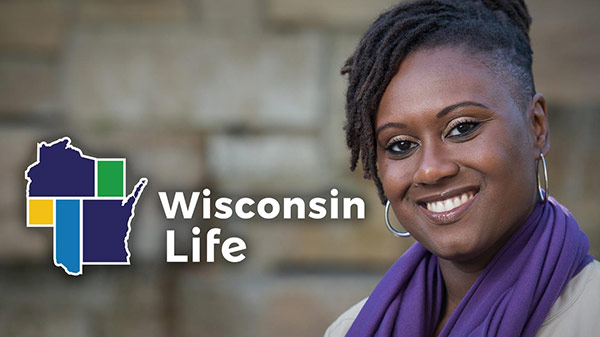
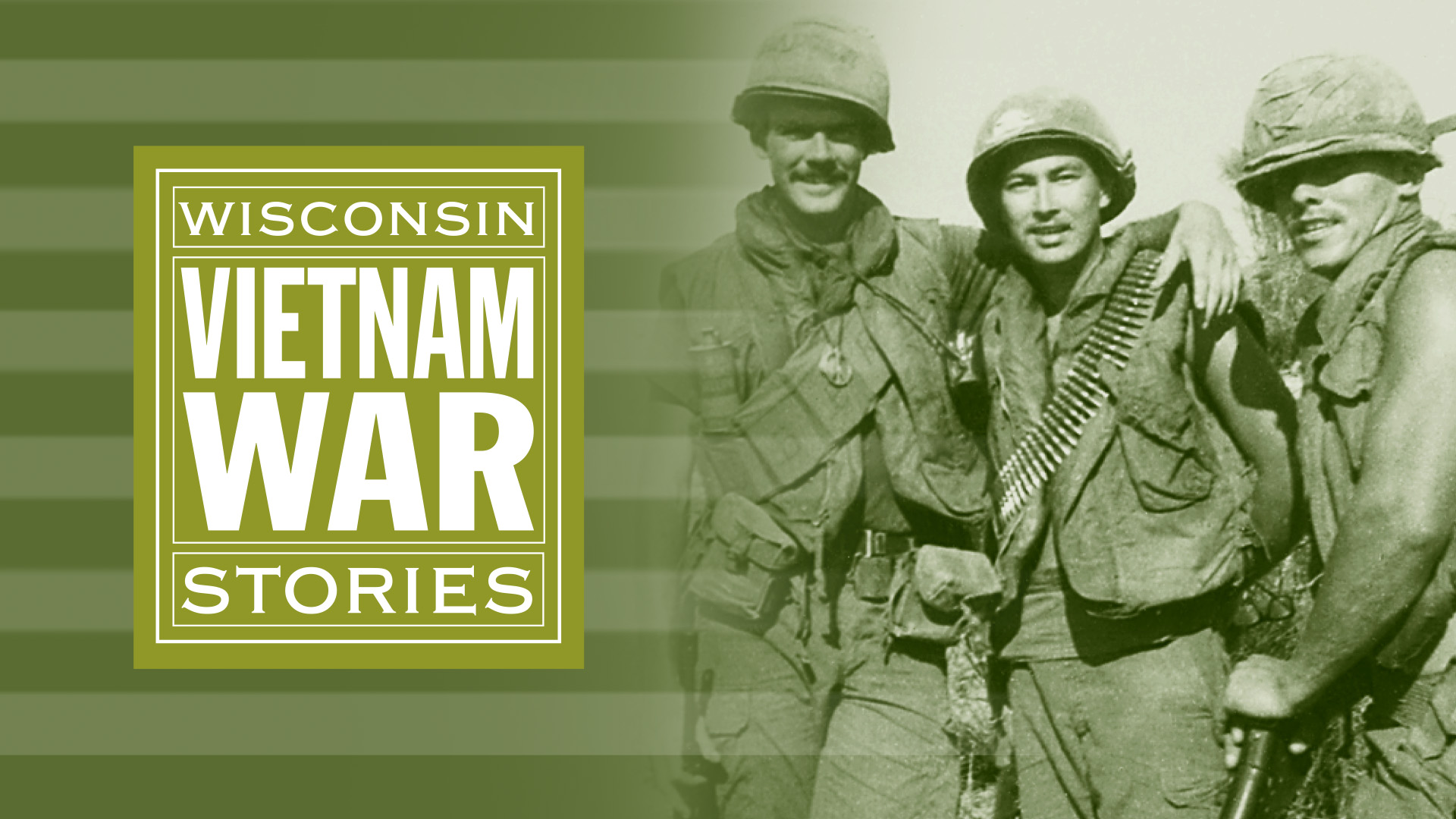

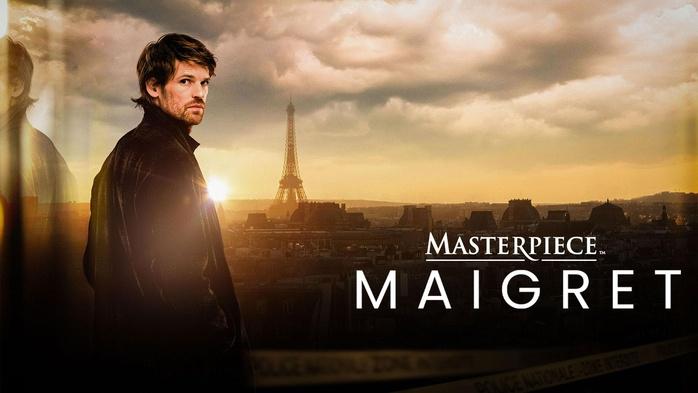

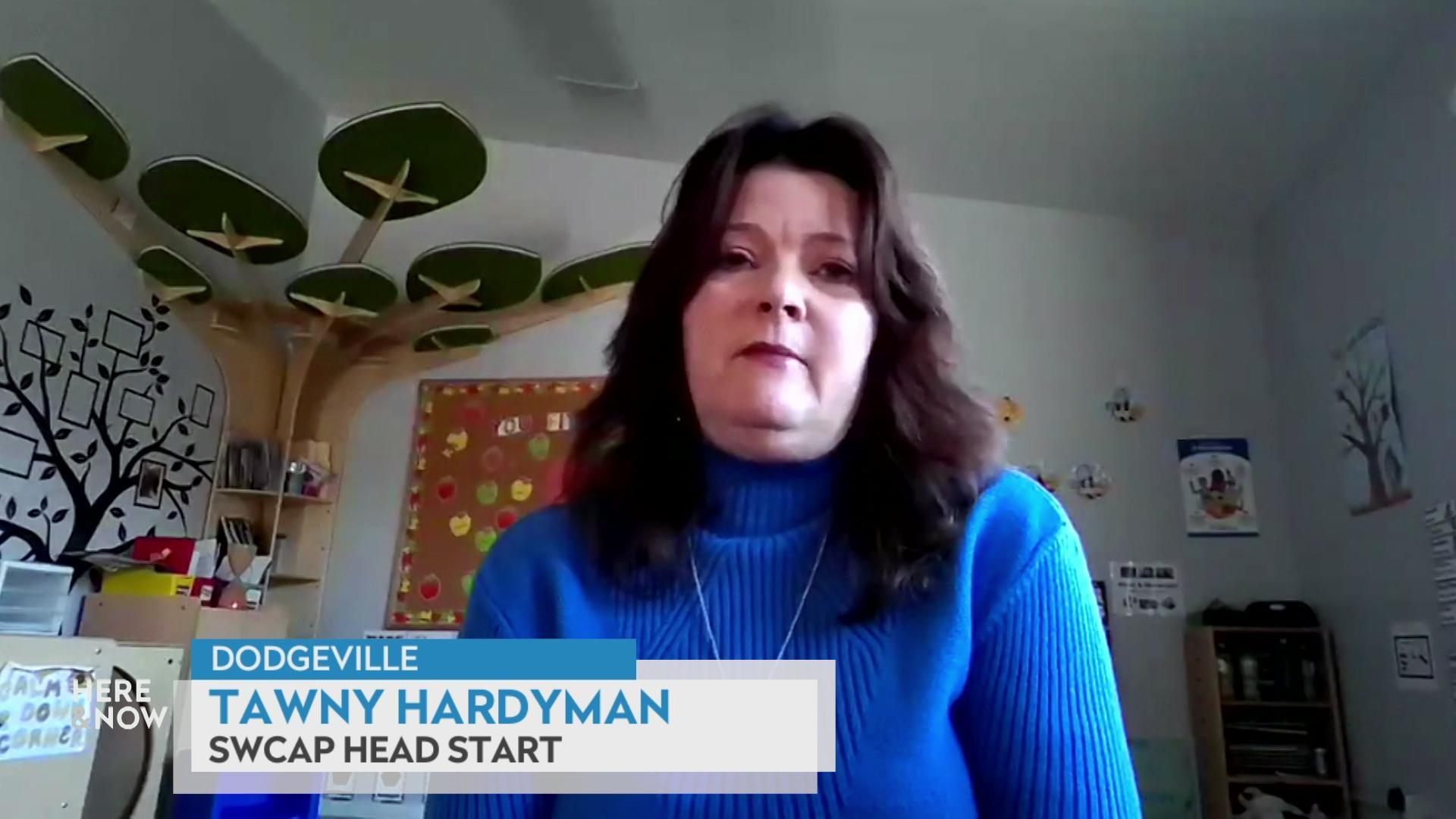
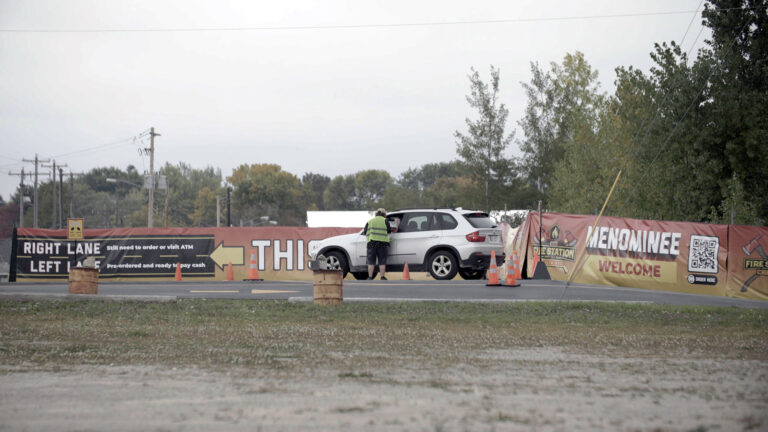


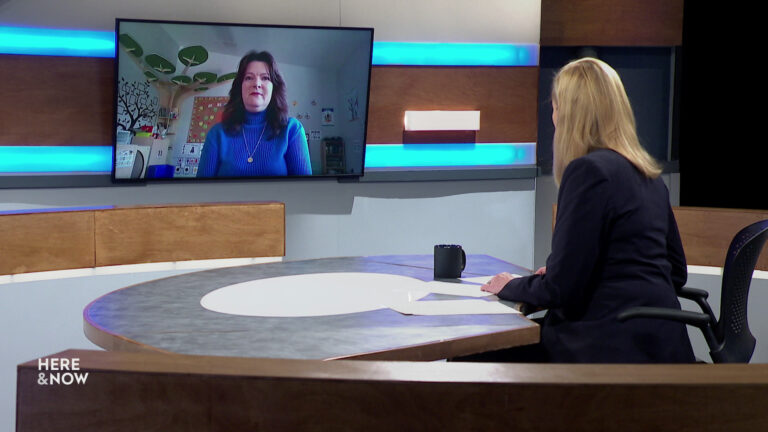

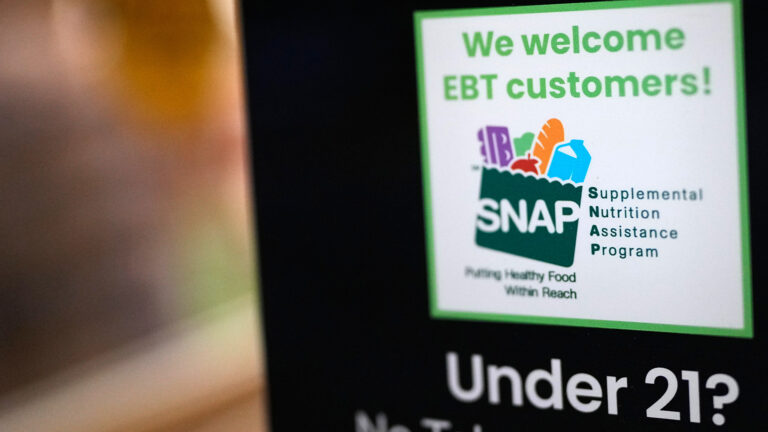
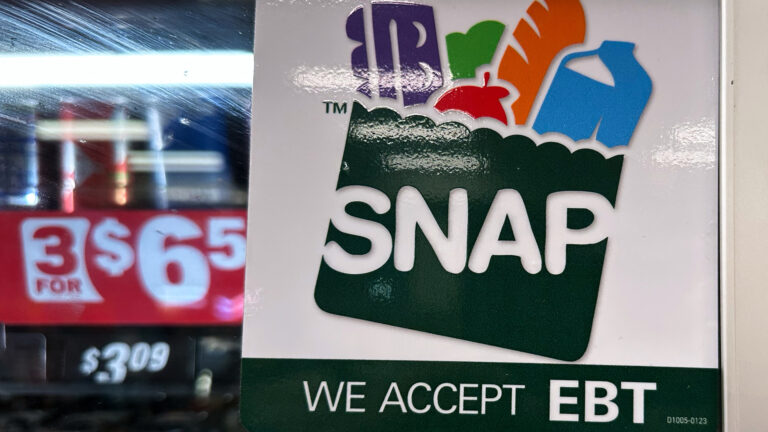
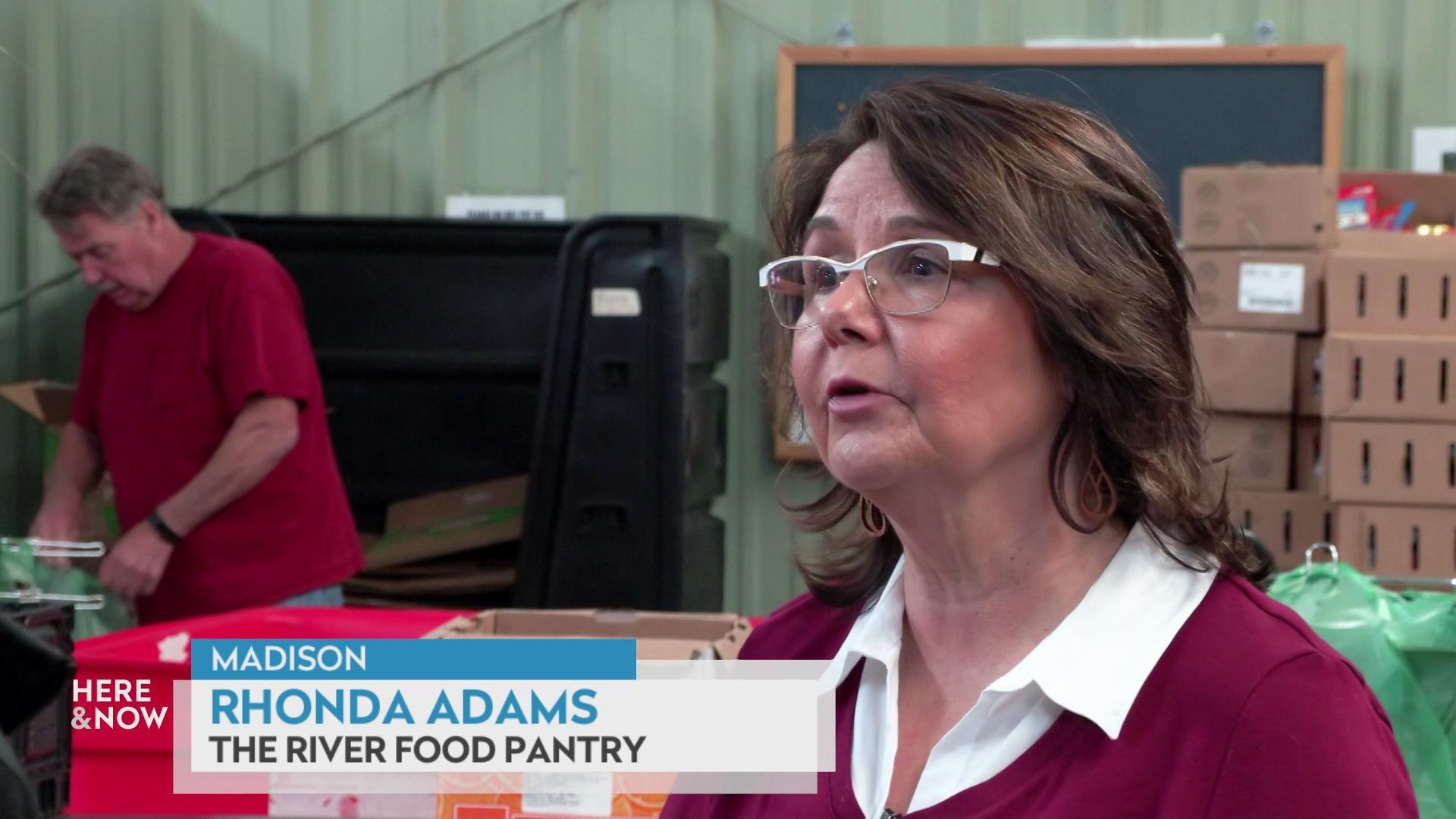


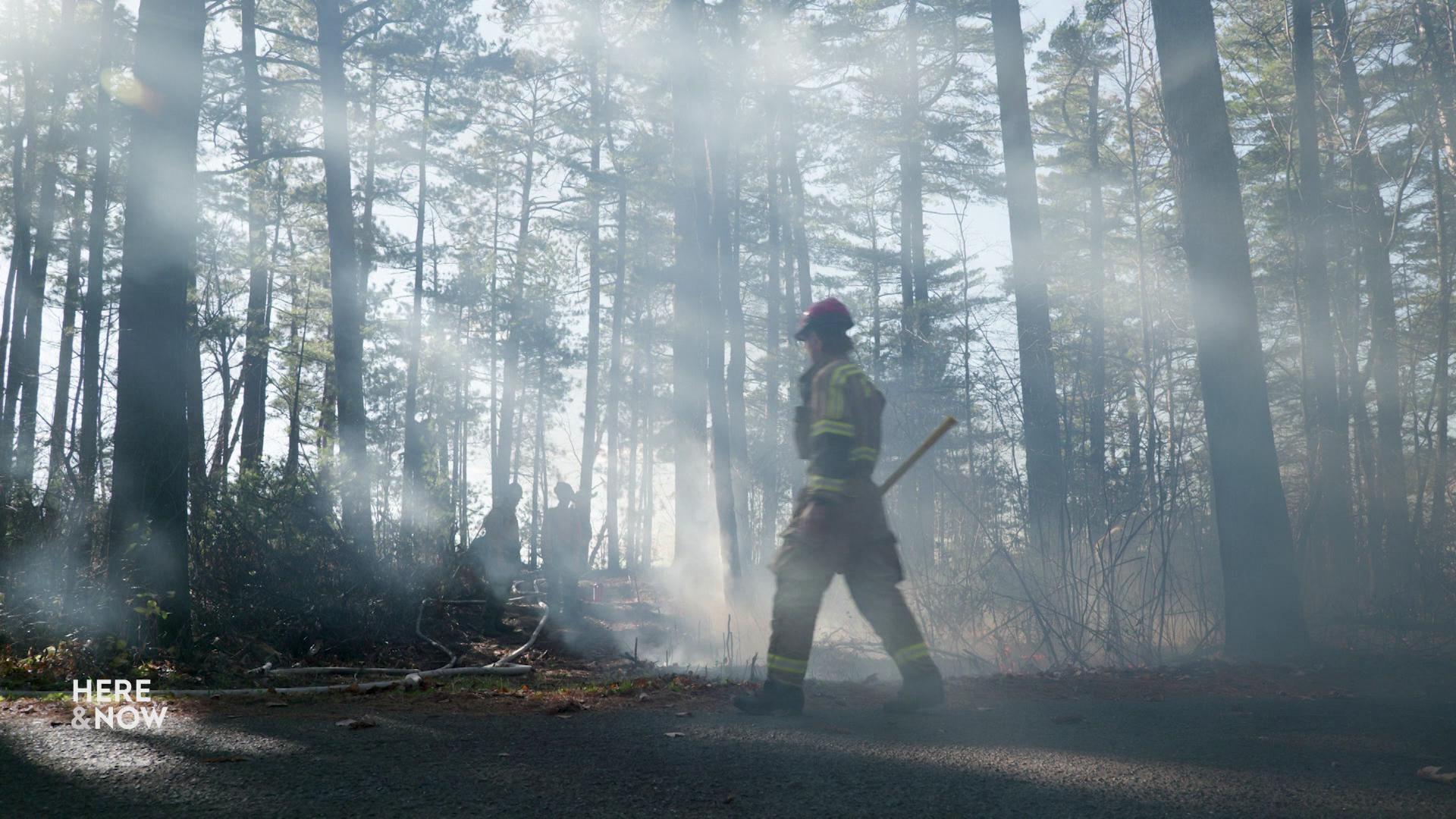

Follow Us